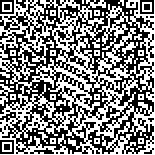冯淑艳,朱愈,李六一,魏延丽,王蓓.尺神经共同刺激影响腕管综合征正中神经远端潜伏期:避免误差的定量测定[J].中华物理医学与康复杂志,2016,38(10):730-734
扫码阅读全文

|
| 尺神经共同刺激影响腕管综合征正中神经远端潜伏期:避免误差的定量测定 |
|
| |
| DOI: |
| 中文关键词: 腕管综合征 尺神经共同刺激 尺神经大鱼际远端潜伏期 |
| 英文关键词: Carpal tunnel syndrome Ulnar nerve co-stimulation Ulnar-thenar distal latency
Fund program:Henan Province Key Project of Medical Sciences and Technology(201303161) |
| 基金项目:河南省医学科技攻关计划普通项目(201303161) |
|
| 摘要点击次数: 2369 |
| 全文下载次数: 3622 |
| 中文摘要: |
| 目的研究尺神经-大鱼际复合肌肉动作电位(CMAP)潜伏期正常值,以定量分析尺神经共同刺激所致腕管综合征(CTS)患者正中神经-大鱼际潜伏期的误差。 方法正常组112例,记录224侧正中神经-拇短展肌(APB)和224侧尺神经-大鱼际的CMAP潜伏期和波幅。另对其中10例20侧正中神经,分别记录以正中神经-APB最大波幅之刺激强度的30%、50%、70%、100%刺激时的CMAP潜伏期和波幅。其中4例分别予以120%、150%和200%的超强刺激,记录CMAP潜伏期和波幅。CTS组16例,记录到正中神经-APB的CMAP最大波幅后,继续增大刺激强度,记录尺神经共同刺激效应后的正中神经-大鱼际CMAP。 结果①正常组:尺神经-大鱼际远端潜伏期为(3.17±0.25)ms,波幅为(6.60±1.07)mV;正中神经-APB远端潜伏期为(3.45±0.31)ms,波幅为(6.47±1.08)mV。当正中神经刺激强度从引出最大CMAP波幅之强度的30%、50%、70%增加至100%,正中神经远端潜伏期相应缩短0.1~0.3ms;达到最大波幅后继续增加刺激强度至120%、150%和200%的超强刺激,则潜伏期不再继续缩短。②CTS组:尺神经共同刺激所引起的正中神经-大鱼际CMAP潜伏期缩短范围为0.5~8.7ms,导致正中神经-APB的错误潜伏期范围为(2.9~4.1)ms。 结论CTS患者正中神经检测时,若正中神经-APB CMAP潜伏期随刺激强度增大而缩短超过0.3ms,并且达到2.9~4.1ms的范围,则提示可能发生了尺神经共同刺激。 |
| 英文摘要: |
| Objective Median nerve motor conduction studies should be performed with supramaximal stimulation. However, overstimulation at the wrist can cause co-stimulation of the ulnar nerve which results in depolarization of ulnar innervated muscles in the thenar space and changes in the CMAP distal latency and amplitude. In testing carpal tunnel syndrome (CTS), this is a common technical error for both the beginners and experienced electromyographers. This study reports the normal ulnar-thenar CMAP distal latency relevant to the electrodiagnostic evaluation for CTS. MethodsMedian and ulnar nerve motor nerve conduction studies were performed in 112 normal subjects on 224 sides, and in 16 individuals with CTS on 18 sides. In a subset of 10 healthy subjects, the median nerve was stimulated with sequentially increasing currents to obtain 30%, 50%, 70%, and 100% of maximum CMAP amplitude, and with 120%, 150% and 200% supra-maximal stimulation. CMAP characteristics were measured for all stimulation currents. In CTS subjects, after obtaining the median-APB CMAP, the currents were sequentially increased until ulnar co-stimulation was obtained with changes of CMAP latency and waveform. ResultsIn normal subjects, the ulnar-thenar CMAP distal latency was 3.17±0.25 ms, and amplitude 6.60±1.07 mV; the median-APB latency was 3.45±0.31 ms and the amplitude was 6.47±1.08 mV. In normal subjects, the increased stimulation intensity reduced the median- APB distal latency by 0.1 to 0.3 ms. There was no further change in latency with up to 200% supra-maximal stimulation. In CTS patients, with increased intensity of stimulation resulting in co-stimulation of ulnar nerve, the median-thenar distal latency reduced by 0.5-8.7 ms. ConclusionsDuring median-APB testing with increasing intensity of stimulation, a decrease in latency of over 0.3 ms with a shortened latency in the range of 2.9 to 4.1 ms might be suggestive of probable co-stimulation of the ulnar nerve. |
|
查看全文
查看/发表评论 下载PDF阅读器 |
| 关闭 |
|
|
|